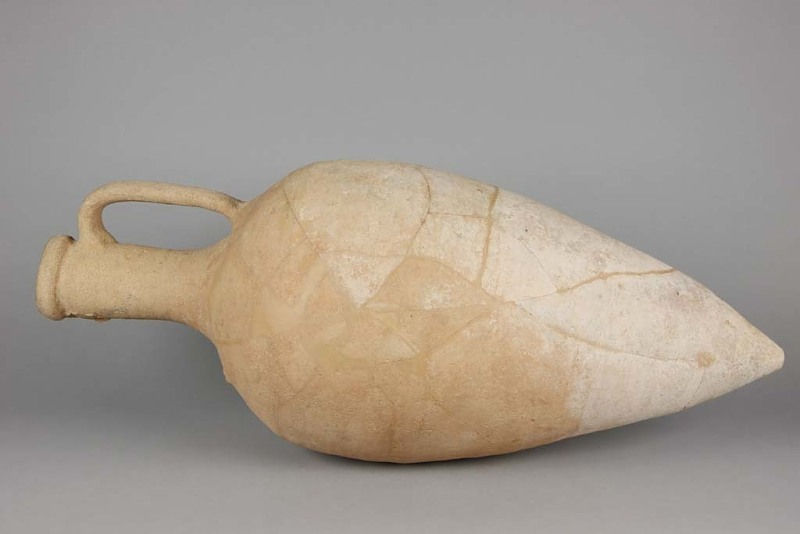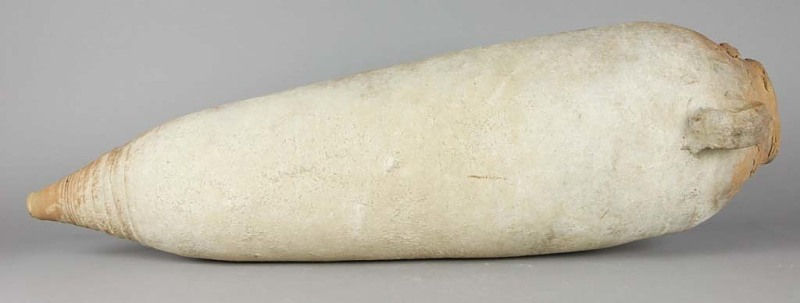The Amphora: The Tupperware of Ancient Greece
- Julia McDonald

- Nov 26, 2020
- 5 min read
There are few things more closely associated with Ancient Greek culture than wine. Images of symposiums are etched out in our collective memories: beautiful, ethnically-ambiguous men lounging on expensive-looking couches, being served by equally beautiful women. Wine obviously isn’t unique to Greece, and neither are the vessels in which it was stored and transported, called amphorae. Even so, this association is not without merit. Greek pottery might seem meaningless beyond its artistic demonstrations. I aim to prove to you that it is anything but.
The area of Ancient Greece (for we knew it to be several smaller city-states for much of its history) was famous for its production of wine and (to a lesser extent) olive oil (Foley et al., 2012). Part of it was climate-driven, for the Greek peninsula was much better suited to growing grapes than the cereals for beer. Much more of it, I would argue, was cultural. Beer, the drink of choice for many of Greece’s enemies, was associated with savagery and lack of sophistication (Philips, 2014). In many ways, it seems this stereotype has survived through the millennia to us in the 21st century.
The export of wine and olive oil, the two products Greece is known for even in the modern age, would not have been possible without the amphora. It’s not terribly flashy, or beautifully decorated, but that’s what makes it so important. If an historian were to turn over the contents of my home in a thousand years, they would likely learn more from examining my Tupperware than the collection of crystal ashtrays I inherited.
What Is It?
Let’s look at the amphora itself ("Terracotta Amphora, 3rd century B.C., Metropolitan Museum of Art).

Though it may still be a two-handled vase similar in appearance to much of the pottery we associate with antiquity, it differs in its lack of decoration. This isn’t something a Greek family would wish to have displayed in their homes. It doesn’t look like the hundreds of similarly-shaped vases we would see in the AGO or ROM. Yet, it is this plainness that is most notable. From its bland exterior, historians and archeologists can know what it was used for: Transportation of foodstuffs, specifically wine.
Holding between 25 and 30L (depending on the potter and, as we will see, the place of origin), each amphora could hold approximately 30kg of wine (Philips, 2014). If their design seems ungainly, that’s because it is; it would have been remarkably easy for them to roll around and break open, especially when most wine shipments to the rest of Europe were done over water. It’s no wonder, then, that amphorae (the technical plural term of amphora) were eventually replaced by wooden barrels, much to the chagrin of archeologists (Philips, 2014). Wood, as we know, breaks down rather quickly over time, especially underwater.
This all begs the question: Why should we care? Why should the popular historian, the reader of this blog, care about this rather bland bit of leftover pottery? Is there really any value to digging up the old Tupperware of an ancient civilization?
I’m glad you asked. The reason why amphorae are so important is relatively simple, but split up into a few different parts that I will now explore.
Part One: Underwater Discoveries
For a lot of children, myself included, there was an allure to the life of an archeologist. We base our knowledge of the career on Indiana Jones, associating it with adventure and heroism. The thought of being the first to do something is very attractive, but as we age we begin to understand that it isn’t very realistic. There are no new continents to discover, no tribes that remain un-contacted. It seems like everything worth discovering has already been discovered by someone else. These amphorae are proof that this isn’t the case, and that every time we start to wonder if we should hang up our chisels and brushes (real or metaphorical), some new innovation arises, opening doors to discovery.
Since the advent of SCUBA diving in the 60s, the field of underwater archeology has been created. Able to stay underwater for sometimes hours at a time, underwater archeologists make new and exciting discoveries around the globe, uncovering sites their earlier counterparts would have thought impossible.
In the ocean to the south of France alone, for example, literally hundreds of thousands of amphorae have been discovered (Philips, 2014). The ships carrying them may have been washed or eaten away several hundred years ago, but the pottery they were carrying remains, virtually untouched. One such wreck, detailed in the International Journal of Nautical Archeology (yes, there is such a thing. I was as surprised as you are) was discovered accidentally by divers of no special education or training in 2006. Preliminary investigation revealed approximately 500 amphorae immediately visible, with countless more buried beneath the seafloor (Demesticha, 2011). There is still so much we haven’t discovered that could tell us so much about the history of civilizations like Greece. Luckily, much of it is undisturbed. Divers are a relatively rare breed, and are (at least in theory) trained not to touch anything that may be of archeological importance. We find ourselves in the heyday of new discoveries, in an element that, without technological advancement, would have remained impassable.
Part Two: Cultural Value
Think back to the last time you bought a bottle of wine. Was it clear or opaque? Twist top or corked? Tall and thin, or shorter and stouter? And what about the differences between brands of bottled beer? Even a non-drinker can tell a Heineken bottle apart from other brands due to its signature green hue.
As I mentioned earlier, there is a lot that be derived from the model of amphora that is found. Let’s compare two amphorae photographed by the Smithsonian Institute in Washington D.C.


Above, we have an amphora of uncertain European origin. Below, we have an amphora from somewhere in Palestine ("Amphora," the Smithsonian: National Museum of Natural History).
We need no training in archeology or history to notice the immediate physical differences between the amphorae. On the left, we see a single-handled amphora of relatively smooth form and neatly tapered bottom. Is this a suggestion of a later date of creation, or possibly of a more skilled potter? Is the apparent differences between the two a style choice, or simply related to the contents of the vessel? The information isn’t listed by the Smithsonian, yet the fact remains that the answers of many of our questions can be found simply in the analysis of found objects. Without written records from the lives of the average working man or woman, we turn to physical evidence across the Aegean.
This is why my comparison of the amphora to Tupperware is, I believe, so important. We know so much about the ‘big’ events of history, the wars, the dramatic deaths, the plagues. We know comparatively little about the lives of regular people. We know what went on in Symposia, but we don’t know the diet of the everyday man or woman. We have the perspective of the Spartans, but not the Helots. With these amphorae, we see the everyday. We have examples of the work of the potters that weren’t skilled enough or lucky enough to create something worthy of display in a museum. The amphora is a celebration of the people who may not ever be despots, or poets, or tragic heroes. It is an assurance that history forgets no one, even if we don’t live our lives in notoriety, and I think that’s pretty special.
Sources:
Book
Philips, Rodrick. Alcohol: A History. Chapel Hill: The University of North Carolina Press, 2014.
Journal Articles
Demesticha, Stella. "The 4th-Century-BC Mazotos Shipwreck, Cyprus: a preliminary report." The International Journal of Nautical Archaeology 40, 1(2011): 39–59.
Foley, Brendan P., Maria C. Hansson, Dimitris P. Kourkoumelis, and Theotokis A. Theodoulou. "Aspects of ancient Greek trade re-evaluated with amphora DNA evidence." Journal of Archaeological Science 39 (2012): 389–398.
Webpages
“Amphora.” The Smithsonian: National Museum of Natural History, record IDs: nmnhanthropology_8324504 and nmnhanthropology_8185093 respectively. Accessed September 29, 2020. https://www.si.edu/object/amphora:nmnhanthropology_8185093 and https://www.si.edu/object/amphora:nmnhanthropology_8324504.
“Terracotta amphora, 3rd century B.C.” The Metropolitan Museum of Art, accession number 74.51.392. Accessed September 30, 2020. https://www.metmuseum.org/art/collection/search/239977.


Comments